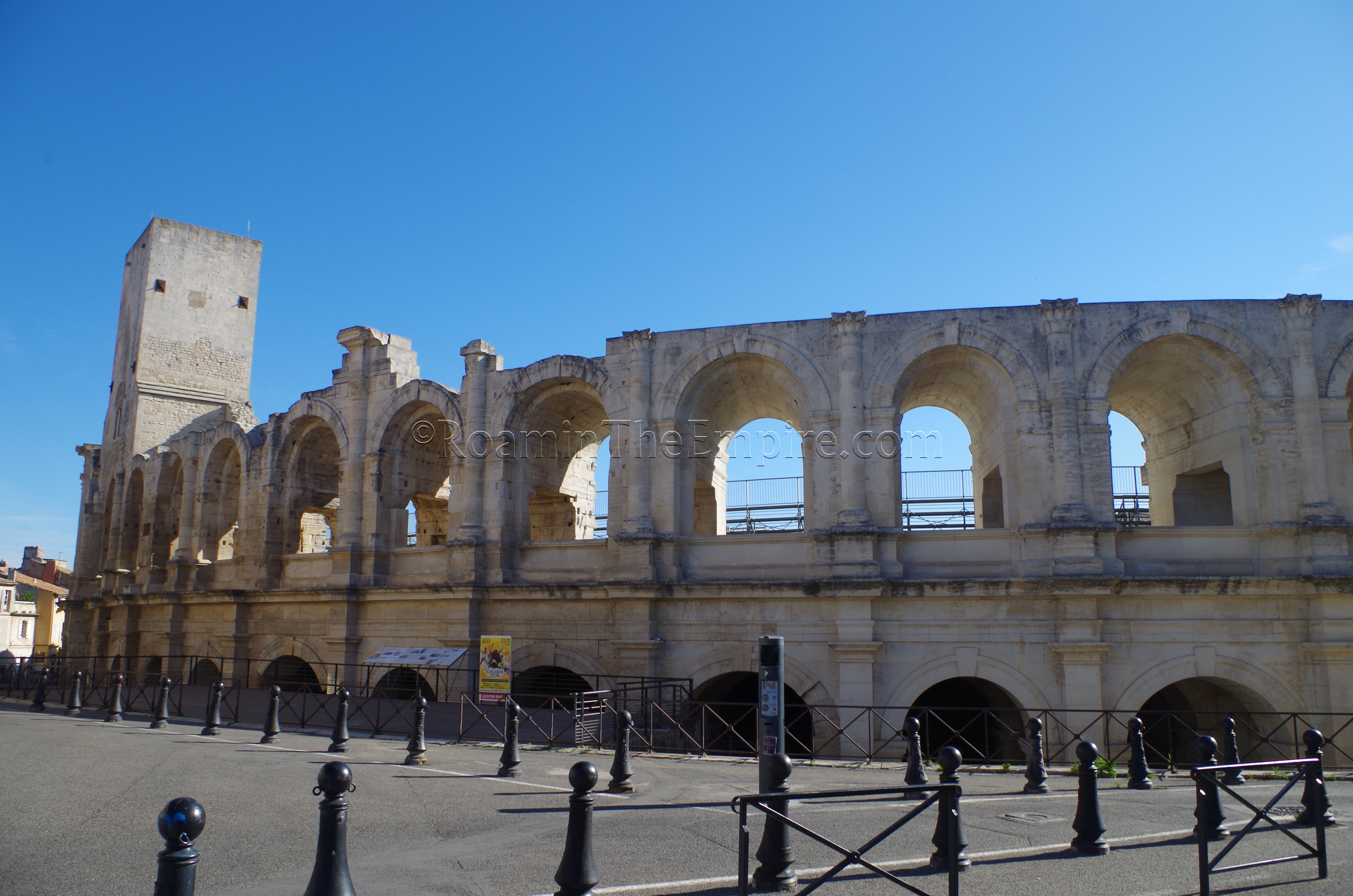
Most Recent Visit: June 2018.
The Roman town of Arelate (modern Arles) seems to have begun life as a Greek settlement known as Theline, sometime in the 6th century BCE. In 535 BCE, the settlement was captured by the Saluvii and renamed Arelate, a Gallic language reference to the settlement’s proximity to a marsh. The settlement’s position on the Rhône River and a closer ancient coastline led to it being a relatively bustling center of commerce, despite its close proximity to Massalia, which likely exercised some influence over Arelate for most of its early life. The eventual silting up of the Rhône delta made a significant negative impact on the trade of Arelate.
About 123 BCE, Arelate, along with the rest of the region, fell under the dominion of the Romans. In 104 BCE, Gaius Marius constructed the Fossa Marina, a canal that reopened a navigable route from the Rhône to the Mediterranean Sea. With this construction, Arelate’s trade once again flourished, though it still largely lived in the shadow of Masallia. In 49 BCE, during Caesar’s civil war against Pompey, Arelate backed Caesar (while Massalia backed Pompey) and provided ships for Caesar’s siege of Massalia. When Caesar was eventually victorious, Arelate was rewarded with Massalia’s possesions, shifting the balance of importance to Arelate. In 46 BCE, Caesar settled a colony of veterans from Legio VI Ferrata; giving the settlement the official title of Colonia Julia Paterna Arelatensium Sextanorum.
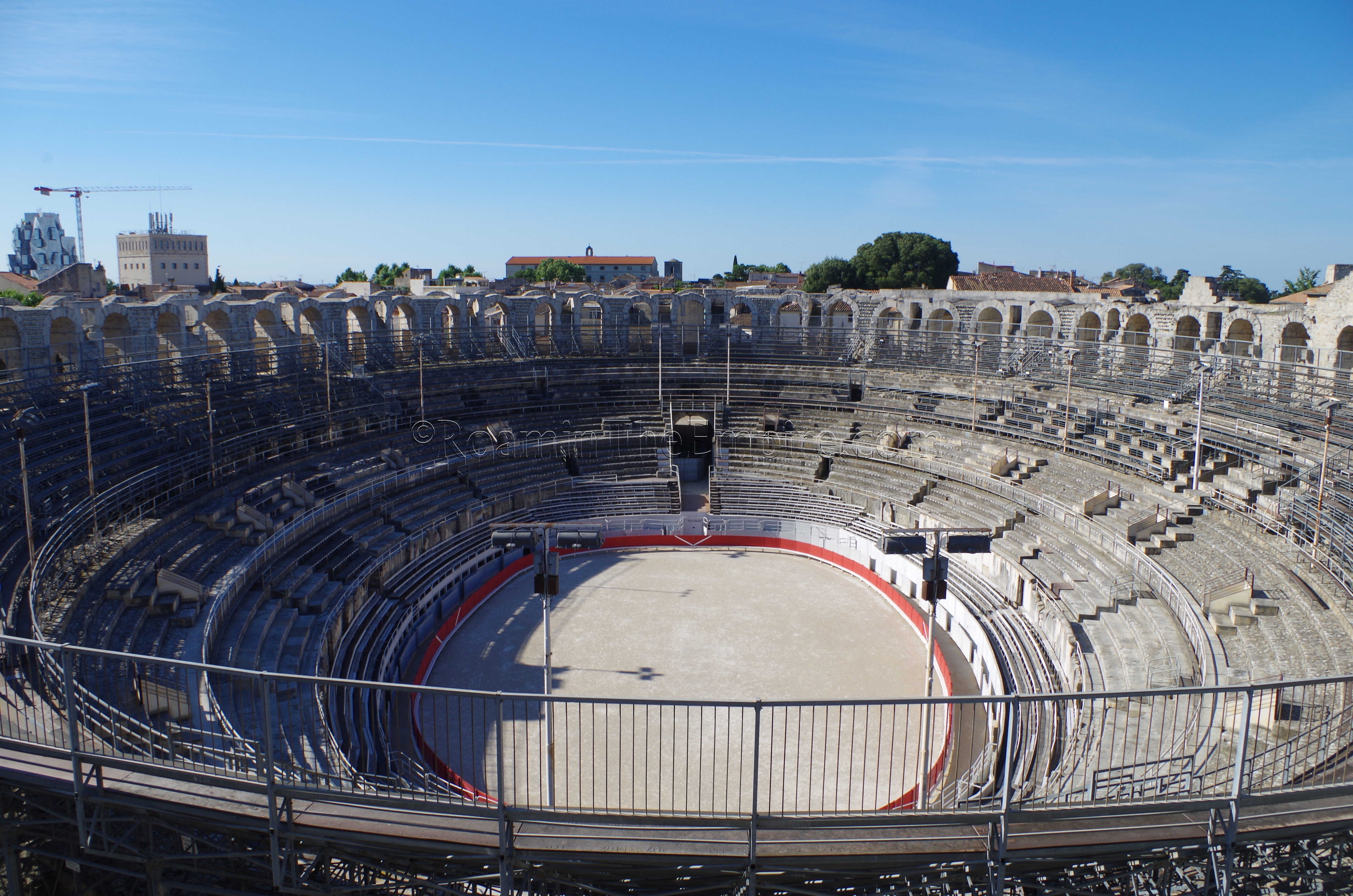
From the reign of Augustus, Arelate grew to become an important port city and was the site of considerable shipbuilding facilities. Under Constantine I, improvements were made to Arelate as it was designated as an imperial residence; his son, Constantine II was born there in 316 CE. In 395 CE, Arelate became the seat of the Praetorian Prefecture of the Gauls and in 408 CE was designated as his capital by Constantine III shortly after he was declared emperor in 407 CE. A major battle between Majorian and the Visigothic king Theodoric II occurred near Arelate in 458 CE, resulting in a resounding Roman victory. The Visigoths would be back not long after in 471 CE, again facing off with the Romans near Arelate, but this time resulting in a decisive victory for the Visigoths, who subsequently captured the city.
Getting There
Getting to Arles is relatively easy, as it is a pretty significant city in the region and is well connected by both train and bus to the surrounding areas. For example, trains leaving Marseille (the closest city with a major airport) stop in Arles pretty frequently and can cost as low as 13.50 Euro while taking as little as 45 minutes for a direct train. Check the schedules and prices here.
The Roman remains in Arles are quite plentiful, and is one of the few remaining examples where there are extant remains of all three of the major entertainment venues; the theater, amphitheater, and circus. Most of the Roman monuments in Arles have a sliding scale of operating hours. From May to September they are open between 9:00 and 19:00, from November to February from 10:00 to 17:00, and in March, April, and October from 9:00 to 18:00. There are also a number of combination tickets that can be bought. A combination ticket for the Amphitheater, theater, and Alyscamps Necropolis is 9 Euros. There is also a pass valid for all the Roman monuments (as well as the Saint-Trophime cloister), with one entrance to each over a span of up to 6 months, which is 16 Euros. Perhaps the best value is a ticket which allows entrance to four of the monuments and one museum (which can be used on the archaeological museum) for 12 Euros and is valid for up to a month. This would allow entrance to all but one of the paid entrance Roman monuments as well as the museum, which is up to a 25.50 Euro value if the four most expensive monuments and the museum are purchased separately.
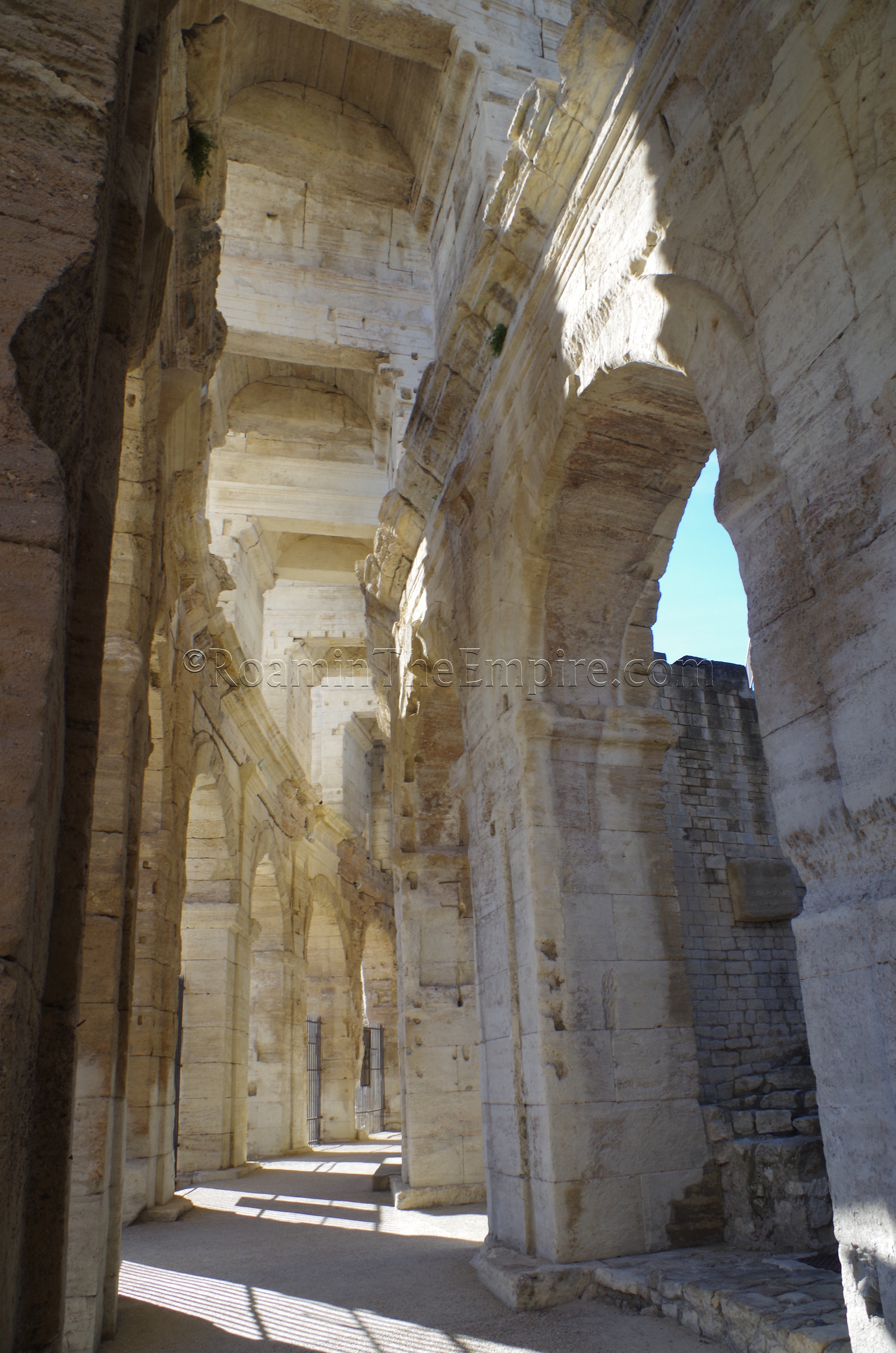
Amphitheater
The amphitheater is probably the focal point of the Roman remains of Arelate, being among the best preserved and most impressive of the monuments. It’s hard to miss and is the first monument one might encounter on the way to the historical center from the train station. The Arènes de’Arles follows the opening hours laid out above and in addition to the combination tickets, is also available to visit with a single combination ticket with the theater for 9 Euros. It should be noted that since the arena provides a space for modern events, the hours may vary on event days.
Originally constructed in between 70-90 CE, the 136m by 107m amphitheater is estimated to have held about 20,000 spectators in two tiers of seating. Some of the seating is preserved in the lower cavea, but as the amphitheater is presently used for events, a great deal of the seating has been replaced with modern concrete seating. Much of the podium separating the lower few rows of seating is present, including a 2nd century CE inscription noting improvements to the arena (including construction of the podium) and games hosted by a Gaius Junius Priscus. Traces of inscription on the balustrade of the podium are also visible in some places. The towers on three of the points of the axes of the amphitheater are of medieval construction. A large portion of the upper and lower arcades (where still intact in the case of the upper arcade) are accessible, as well as much of the modern seating area and one of the medieval towers.
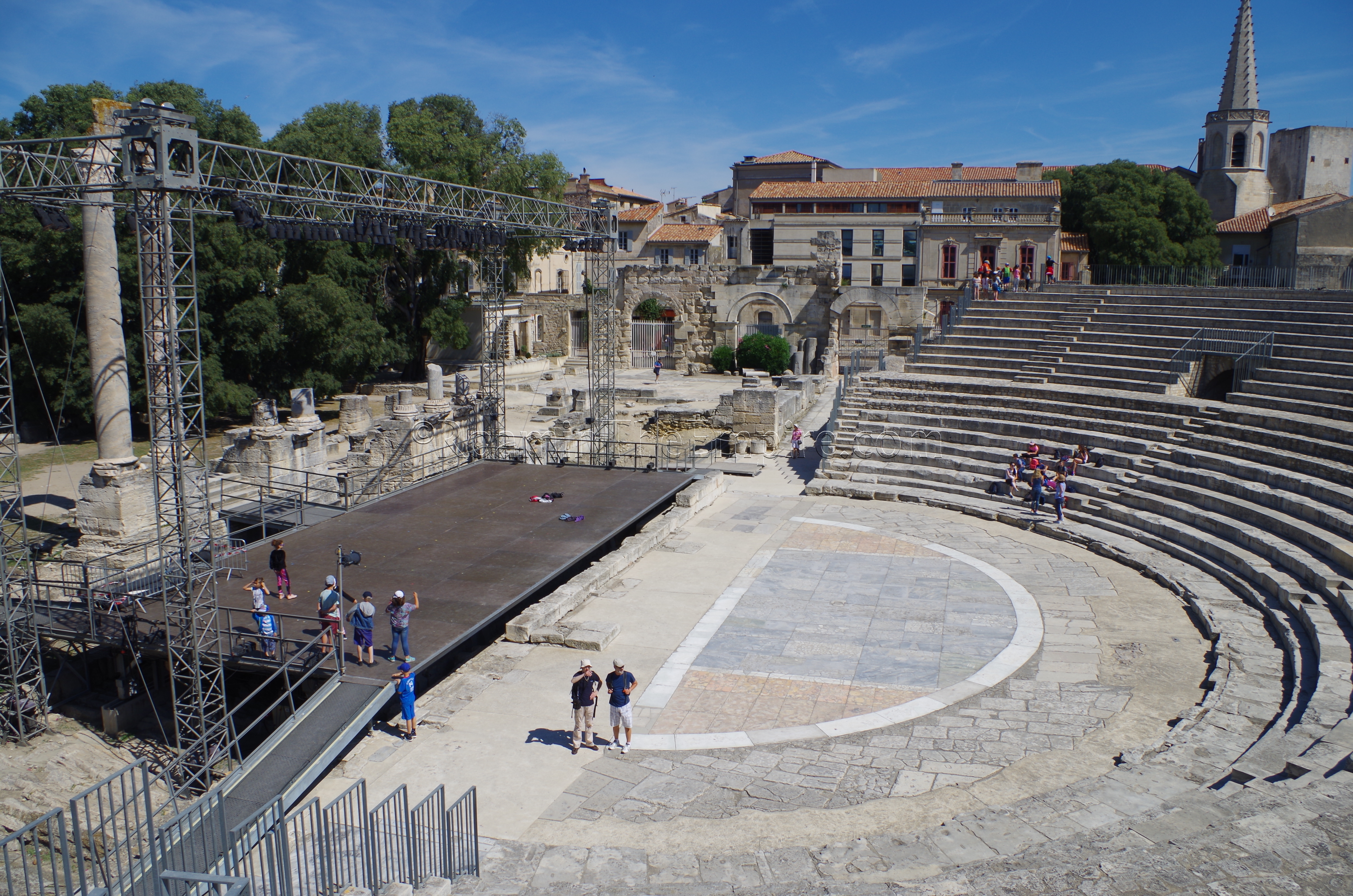
Theater
Adjacent to the amphitheater are the remains of the Théâtre Antique d’Arles. Though the dating of construction is a matter of some debate, a colossal statue of Augustus that was a feature of the complex suggests that it may date from that emperor’s reign. The theater is estimated to have held about 10,000 spectators, and like the amphitheater, a large part of the extant seating is reconstructed in order to accommodate modern performances. Some of the seating is original, and the pink and green marble of the orchestra is also original. The cavea of the theater was actually much larger than what remains, as much of the structure of the theater is no longer extant outside the central portion. Some footprints and fragments of the exterior arcades remain, but it is the medieval tower on the south side of the theater, which incorporated some of the structure of the theater into a defensive fortification, that seems to preserve the original height and extent of the theater building. Bits and pieces of the scenae remain, including a few columns, but much of it is either covered by a modern stage structure or not remaining at all beyond the foundations.
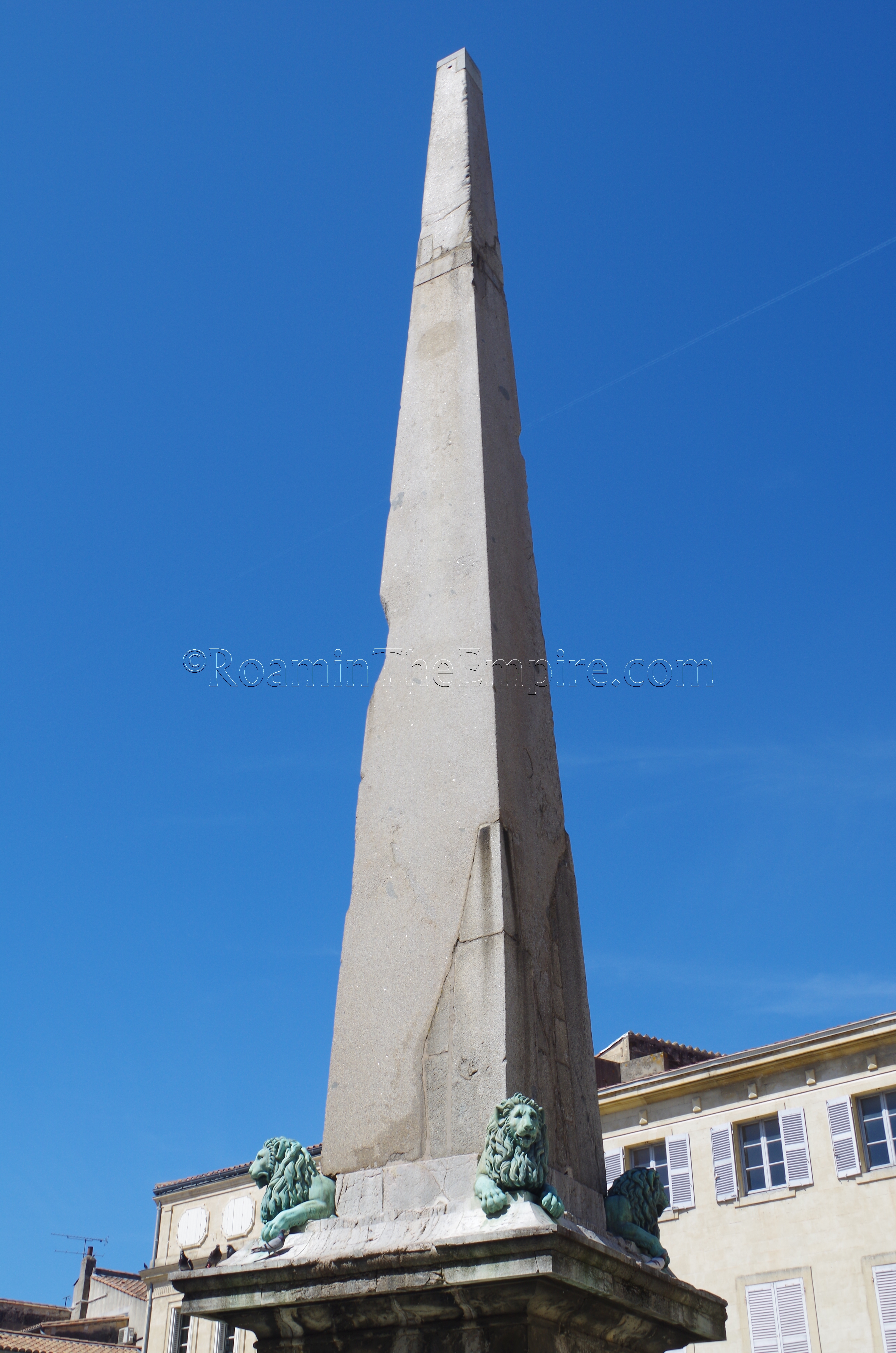
Forum
A few blocks to the west of the theater is Place de la Republique, the central square of the old town. In the center of the square is l’Aiguille d’Arles, a 15 meter red granite obelisk atop a pedestal. While the stone for the obelisk seems to be have been quarried in Egypt (though alternative analysis theorizes an Asia Minor origin), it doesn’t seem to be originally of Egyptian manufacture, but rather was quarried by the Romans. The exact use of the obelisk in antiquity is of some debate, though it seems likely that it was used as a decoration on the spina of the circus before it made its way to the Place de la Republique in the early modern period.
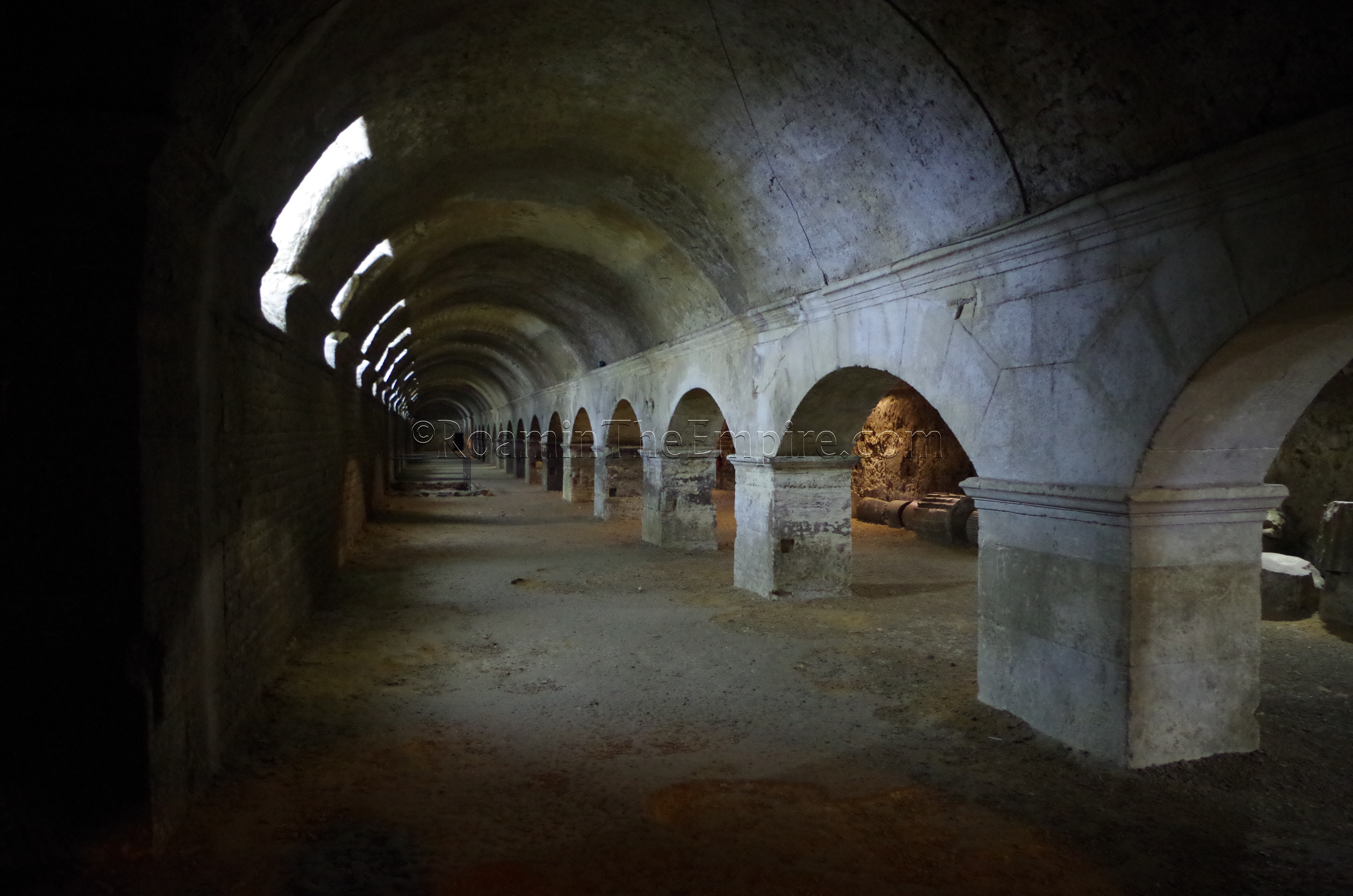
On the north side of the Place de la Republique is the Hotel de Ville building. When entering through the Place de la Republique entrance, off to the left is the entrance to the Cryptoportiques du Forum, the cryptoporticus of the forum. The cryptoporticus has the same opening hours as the theater and amphitheater and is included in some of the combination tickets, or is 4.50 Euros individually. The three hallways of the cryptoporticus, which was constructed between 25BCE and 10BCE under a portico associated with the forum, seems to have been used primarily for storage. The two 90m long north/south corridors and 60m long east/west corridor are completely intact and are accessible to visitors. Evidence of later use, including the 10th century crypt of a church, is also visible in some areas.
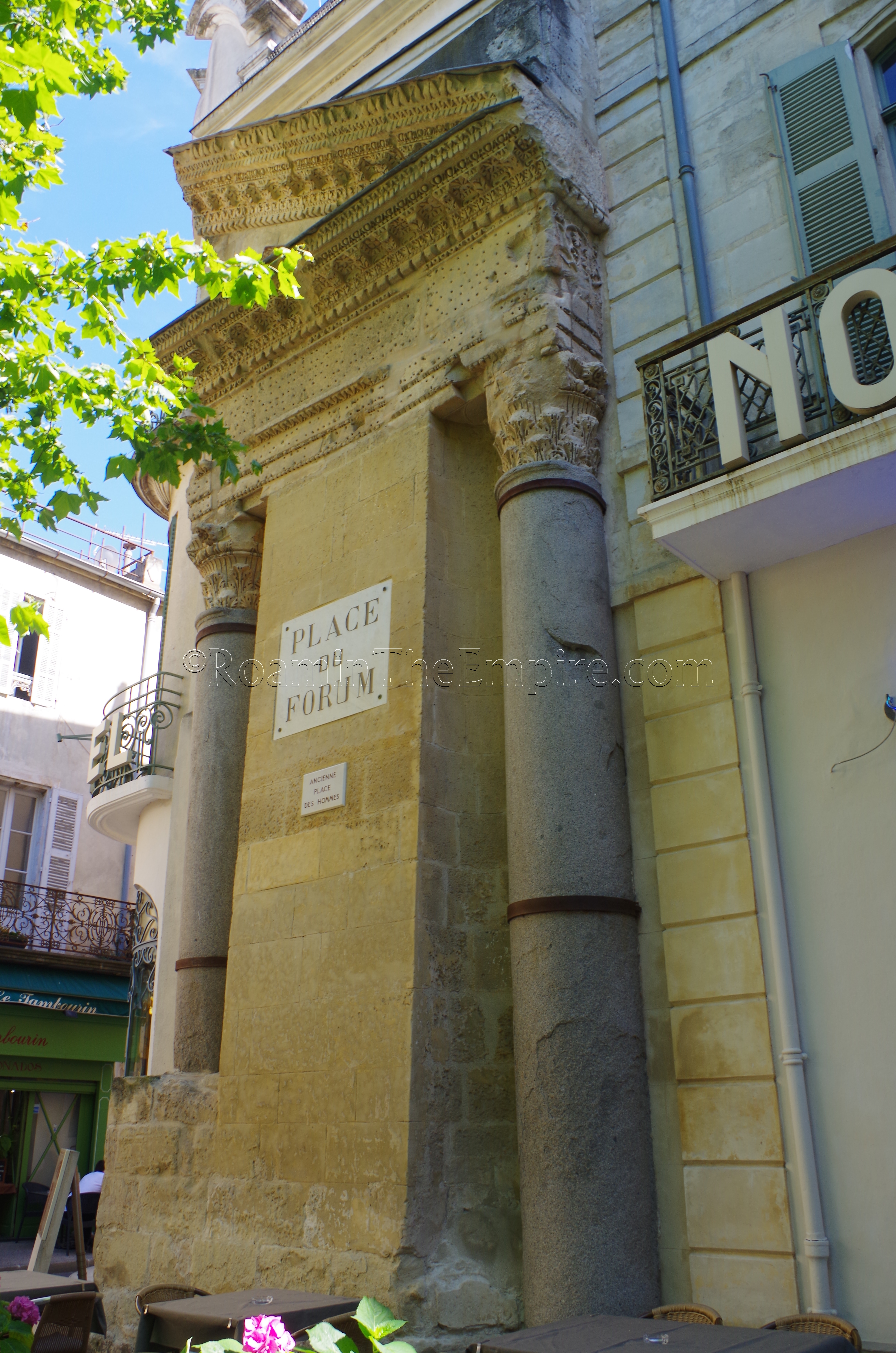
Not far from the cryptoporticus, incorporated in to the façade of the Grand Hôtel Nord-Pinus (14 Place du Forum), are two columns and part of the pediment of a monumental entrance to the forum. Along with the rest of the forum, these fragments likely date from the original construction during the reign of Augustus, between 25BCE and 10 BCE. Because it’s the façade of the building, facing a public square, these remains can be viewed at any time.
Sources:
Ammianus Marcellinus, Rerum Gestarum, 14.5.
Avienus, Ora Maritima, 679-80.
Bromwich, James. The Roman Remains of Southern France: A Guidebook. London: Routledge, 1996.
King, Anthony. Roman Gaul and Germany. University of California Press, 1990.
Pliny the Elder, Historia Naturalis, 3.4.
Smith, William. Dictionary of Greek and Roman Geography. Walton & Murray, 1870.
Stillwell, Richard, William L. MacDonald, and Marian Holland. McAllister. The Princeton Encyclopedia of Classical Sites. Princeton, NJ: Princeton U Press, 1976.
Strabo, Geographica, 4.1.


